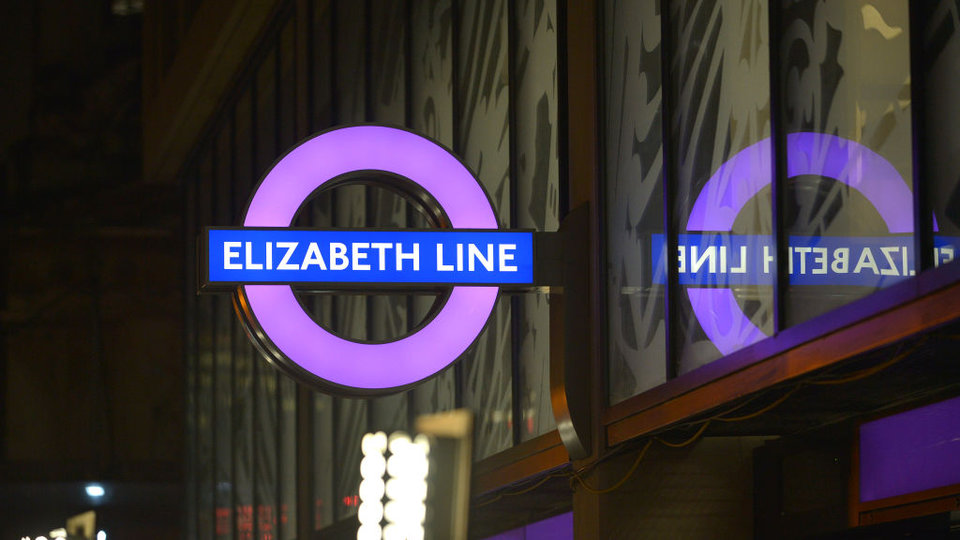Technology
Elizabeth’s digital twin: the technology helping Crossrail to know itself
Train guards:
How cybersecurity is helping rail operators keep on track
Although not a full digital twin, the ‘virtual version’ of Crossrail’s Elizabeth line is a pioneering project using this approach in rail construction. Giacomo Lee explores the Crossrail twin and the potential of digital twin technology for the rail industry.
T
he Crossrail project from Transport for London (TFL) is one of the UK’s biggest ongoing infrastructure projects. Made up of two major railway lines running beneath London from west to east, the £18.7bn Elizabeth line has 73 miles of route and 41 stations.
The long-awaited service is expected to fully open in 2023. But while the Elizabeth line may not quite be there yet in a physical sense, it already has a digital representation, known as a digital twin, fully up and running.

Aerial view of the derailment. Image: UK Government
Virtually the Elizabeth Line
“The Digital Twin Consortium, the industry-standard body of which Dell Technologies is a founding member, defines a digital twin as ‘a virtual representation of real-world entities and processes, synchronised at a specified frequency and fidelity,’” explains Arash Ghazanfari, CTO for UK at Dell Technologies.
“The digital twin is not a ‘singular’ emerging technology but rather a convergence of multiple solutions that creates business outcomes and value,” Ghazanfari explains. The solutions which converge in a digital twin, he says, are artificial intelligence and cloud, edge, and high-performance computing.
Other people have shorter lists of digital twin ingredients, and others include more. Some add to the list by incorporating analytics tools and virtual and augmented reality (VR, AR) in their builds.
The Crossrail twin was set up before the term digital twin was even widely adopted; a detailed overview on the project by Crossrail’s head of technical information Malcolm Taylor in 2017 simply calls it a ‘virtual version’ of the Elizabeth line. A web-based intuitive interface created by Crossrail Ltd made database materials and models available to users when working with maps of the line.
The end result is not a ‘full’ digital twin, but something made with the tools ‘most appropriate at the time for the unique requirements of the project,’ as a Crossrail spokesperson tells Verdict.
Back in the mid-1990s railway designers created a virtual model of London’s Paddington station that users could access by VR.
Construction of the Elizabeth Line’s digital twin began in 2008 using business information modelling (BIM) with spatial modelling technologies and 3D computer aided design (CAD) linked to information databases. This wasn’t entirely unheard of in the rail world; back in the mid-1990s railway designers created a virtual model of London’s Paddington station that users could access by VR.
“Something like CAD captures the idea behind digital twins, but it is ultimately too isolated to truly count,” says Craig Beddis, CEO and co-founder of deep-tech distributed computing startup Hadean. “The digital twins of today are virtual replications of numerous systems working together. To virtually represent entire facilities or processes like supply chains requires multi-faceted and large-scale simulations.
“Because of this, a project usually involves synthesising a number of different data types into one coherent architecture. The various different systems have to communicate with each other in a meaningful way, generally representing a larger computational task. Different processes often need to be run in parallel, with branching possibilities that can result in surges of computational demand.”

Network Rail has plans to meet science-based targets to reduce emissions. Credit: Jon Buttle-Smith | Unsplash.
Predictive planning
Crossrail’s team certainly needed something more than a CAD model to show what the finished product might look like. As Taylor explains, “data models forecasting when assets might fail are critical”.
This necessitated use of a common data environment (CDE). A CDE is a single information model usually made up of graphical models, non-graphical data and documents as data points. As it can be shared freely among organisations and contracts, Crossrail was able to solve the problem of siloed teams and data. Its digital twin comprises over 250,000 models of everything from lightbulbs to cable trays, each one ‘twinned’ and labelled from database information on Crossrail’s physical assets.
“We utilised graphical models in the design and construction stages of the project,” Crossrail’s spokesperson tells Verdict. “However, during construction, changes were made, initially in civil and structural, and then more so with mechanical, electrical and public health and system-wide assets, many of which were not reflected in the models other than redline markup.
“This meant that the models, although still having use, were not a full implementation of the physical counterpart, in addition to which the linkage between model and asset information was never fully realised due to a mixture of technical and commercial issues.”
What makes a digital twin?
While it is not a ‘full’ twin, the Elizabeth line model is not a simple BIM either.
Digital twins by nature update on BIMs by being an anchor for the internet of things within infrastructure and smart spaces. Each source of data is pulled together and united by a twin, which in turn helps a build’s management. Where a BIM constructs and designs, a twin manages and maintains; like a real-life asset, it never stops being affected by what’s around it.
In effect, a digital twin is a web-powered model which never stops building. With a twin in their toolkit, Crossrail managers could monitor the Elizabeth line in 3D model form on various devices once construction work began.
This not only saves time but money for stakeholders. Taylor notes that the cost of keeping the models up to date is “insignificant compared to the cost to the system-wide contractors in familiarising themselves with the as-built details of the station”.
Where BIM constructs and designs, a twin manages and maintains; like a real-life asset, it never stops being affected by what’s around it.
But there’s more: Crossrail workers can hold up a tablet for an AR view of the electricity, water and communications beneath a station wall or floor. This virtual model is made possible by the tablet’s coordinates through GPS and Bluetooth points, and removes all need for maps and possibly outdated models.
Live, automatically updating digital twins are quite different from BIMs of the past. As IEEE Spectrum reported in 2016, each of Crossrail’s tunnels, shafts and stations are monitored in real-time. Embedded into the concrete walls, sensors can tell how much strain the walls are under, thus ascertaining external stress on a tunnel and relaying this in real-time to the twin.
Other, wireless sensors from the well-known British startup Utterberry monitor temperature and humidity; inexpensive and only needing one charge a year, they help ensure the Crossrail twin gets its continuous fill of real-time data.
Twin contracts
Crossrail’s pioneering use of digital twin technology is likely why HS2 is employing its own digital twins to maximise maintenance.
Interestingly, New Civil Engineer reports that HS2 Ltd offers double contracts to clients - 'one for a digital twin and one for the asset', as a source told Verdict.
Those who believe in the potential of digital twins believe they should be part of contracts from a project’s very start. This is the best way to ensure that full digital twins not only get made, but that they are there from foundational stages in order to avoid problems compounding to become something like Britain’s tangled railway system, managed by a crosswire of siloed stakeholders.
It also gives the historical grounding, which Ghazanfari believes is crucial to digital twin data.
“Only by equipping your digital twin with the right type and volume of data can you hope to identify potential failures before they occur and deploy corrective measures quickly,” he says.
Main image: A new London Underground roundel for the Elizabeth Line is illuminated outside the new Crossrail station at Farringdon. (Photo by Jim Dyson | Getty Images)